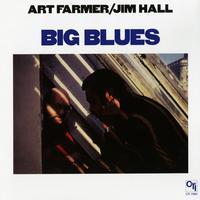I listen to it constantly and really like it. So much talent. I cant find any better way to describe this album other than it rocks. - Marla Ahlgrimm
Unusual Session, Unusual Record!
The CTI record label started by producer Creed Taylor in 1968 didn’t immediately get the respect it deserved from jazz snobs who found its musical output as glitzy as its glossy cover art. It was the "smooth” jazz label of its day. By the musical terms of the next decade CTI’s original musical vibe was almost “free jazz” compared to the next decade's elevator music slop labeled as “smooth jazz.” It was smooth alright, but jazz?
Taylor of course, oversaw the introduction of Bossa Nova to America, having produced Verve classics like Getz/Gilberto and Jazz Samba, both of which were wildly popular and equally “commercial.”
Taylor didn’t see commercial success as a problem and CTI had many commercial successes with well-respected artists like Milt Jackson, Freddie Hubbard, Stanley Turrentine and Paul Desmond among them. They may have desired to reach a larger audience but none of them probably considered what they were doing “selling out.”
The label brought commercial success to George Benson and many others, while during a jazz lull period it paid the rent for many well-known jazz giants of an earlier era along with their almost as well known sidemen.
With its colorful, dramatic covers and gatefold sleeves, the label also had a strong visual identity. It was a complete package, including reliably excellent recordings mastered by Rudy Van Gelder, managed by a master and quite successful for a long run.
But the jazz cognoscenti never considered the label ‘hip’ and for a while there, you couldn’t give away used copies of most of the catalogue. That all changed when a generation of rappers and samplers found the grooves and the overall vibe very cool and the label attained almost overnight hipness.
Finding used CTI releases used to be easy and the pickings cheap. No so much anymore! In all of my CTI pickings I’ve never before seen this one featuring mellow flugelhorn player Art Farmer, the great jazz guitarist Jim Hall, vibraphonist Mike Mainieri, electric bassist Mike Moore and drummer Steve Gadd, better know in certain circles for his backing Paul Simon and Eric Claption than for the jazz ensembles in which he played.
Here they lay down a really cool parlor room style of lyrical jazz on two standards, a Jim Hall original and Ravel’s sad, familiar “Pavane For a Dead Princess” that feels similar to the button down sound The Modern Jazz Quartet produced, though with the horn and guitar, its more colorful,
The Henry Mancini-like opener, Benny Golson’s ”Whisper Not” (Farmer and Golson co-led a group in the early ‘60s) presses along at a medium pace pushed by Moore’s walking bass line.
Thad Jones’s “A Child Is Born” produces a calmer, more ethereal atmosphere with Farmer’s muted flugelhorn reminiscent of Miles.
The album comes close to crashing and burning during Jim Hall’s “Big Blues.” It degenerates into a pretty weak, space filling funk jam at one point and though the group rescues itself, it’s a mood breaker.
The Ravel piece makes up for it though and closes out the set sublimely. If you ever see an album that’s all Peacock on the cover and it turns out to be Pavane pour une infante defunte, an L.A. 4 disc recorded direct to disc on the East Wind label (East Wind 10003) pick it up! It’s got a gorgeous version of the Ravel piece played by Bud Shank, Laurindo Almeida, Shelly Manne and Ray Brown.
The lyrical Hall’s warm hollow bodied electric proves the perfect foil for Mainieri’s Milt Jackson-like cool, glistening mallet strikes. Farmer’s muted flugelhorn floats and fills open spaces.
Gadd’s precise drumming and his use of the kick drum doesn’t swing as freely as what the others are playing, though electric bassist Moore’s measured, almost funky playing here is also stiff by jazz standards (though given that the liner notes say he took over for Eddie Gomez in the Bill Evans Trio, it was how he wanted to play and not a personal limitation!)
The combination of the precise, non-swinging rhythm section and the ethereal vibes, muted flugelhorn and hollow bodied electric (bathed in reverb) played by three very swinging musicians produces a kind of Velcro jazz.
The album floats jazz-like, but anchored by a well-defined rhythm track. It’s a relatively short, four tune album running about 34 minutes. Oddly, side one is cut at 45rpm while side two is at 33 1/3. If that isn’t confusing enough, neither side’s speed is identified.
The Electric Lady recording is of the time: everyone’s miked in isolation and then mixed and reverberated in isolation. The result is a great deal of bass and drum punch and extension. Three-dimensionality is pronounced, with guitar and flugelhorn in particular, holographically forward in the phantom center chanel. The overall tonality is warm, somewhat soft and inviting, though the vibes cut through effectively producing an enticing overall sound.
- Log in or register to post comments



